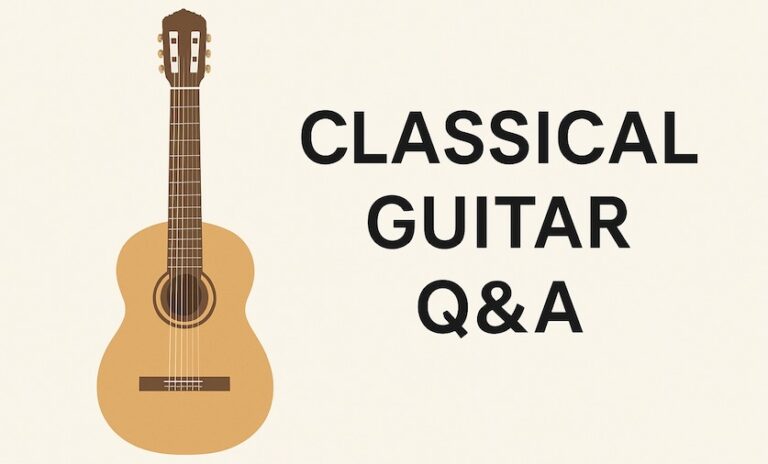This lesson comes from my new book Classical Guitar Repertoire Lessons Grade 3 – Seven pieces at the grade three level with dedicated lessons preparing you for each piece.
Study in C by Francisco Tárrega (1852-1909) – YouTube Video Lesson Link – This work has a clear melody, some chord shapes to navigate, and includes a new technique for the left hand: pivots in and out of barre chords.
Play the bass and melody notes – On the first lesson page I’ve written the piece with the accompaniment removed leaving only the bass and melody voice. Notice the oddity fingering in bar 3 where the 2nd finger plays F natural. This is to allow the 3rd and 1st fingers to grab the C chord in the following bar (when you play the actual piece).
Pivots and pivot barres – Sometimes the requirements of the left hand interrupt the legato sound and we have to find inventive ways to keep the notes sustaining and smoothly connected. Pivots transition you into and out of barres while sustaining particular notes so the legato sound can continue. In Bar 10 and 14 the pivot barre allows the C on the 2nd string to sustain while the upper F and E come and go from the melody. Keep the C, E, and C sustaining while you pivot (piv.) into the BI2 and then out of it.
Another lesson on Hinge Barres and Pivots



Hi and thanks for another nice piece with new things to learn. I have a question about the very first bass C, it´s written both as a full and a quarter note, what does that mean? Also e.g. the bass E in bar 5 is written like this.
Great question!
First off, you only play it once and you don’t have to think about it at all. Sustain the bass note and this is just a notational oddity.
But let me explain. Sometimes, for rhythmic clarity different voices will share the same note head but have different rhythmic values, in which case you want to sustain the longer note value. Here, in the first measure for example, it is clear that the bass voice wants to sustain for the full measure since it is an arpeggio of the basic C chord shape. In most of the cases with guitar music, especially at early levels, the note is played as a single note and was written that way for uniformity (instead of adding eighth notes rests in the upper voice). In more rare occasions it would mean to strike two separate notes, which on the guitar means the same note on different strings. But context usually decides this instantly, here it is very clear that we will not be reaching up for an additional bass note on the 6th string.
To be honest, I maybe should have avoided writing it like this but the original is notated this way so I left it. On revision, I’ll either mention it or revise the notation.
Thanks for the thorough explanation, I will have to think about this a bit.
Well. I find the piovt bar and F bar chord are easy in this piece. The most difficult part for me is fingering in bar 3 where the 2nd finger plays sol in melody while holding the bass sol using 1 finger.